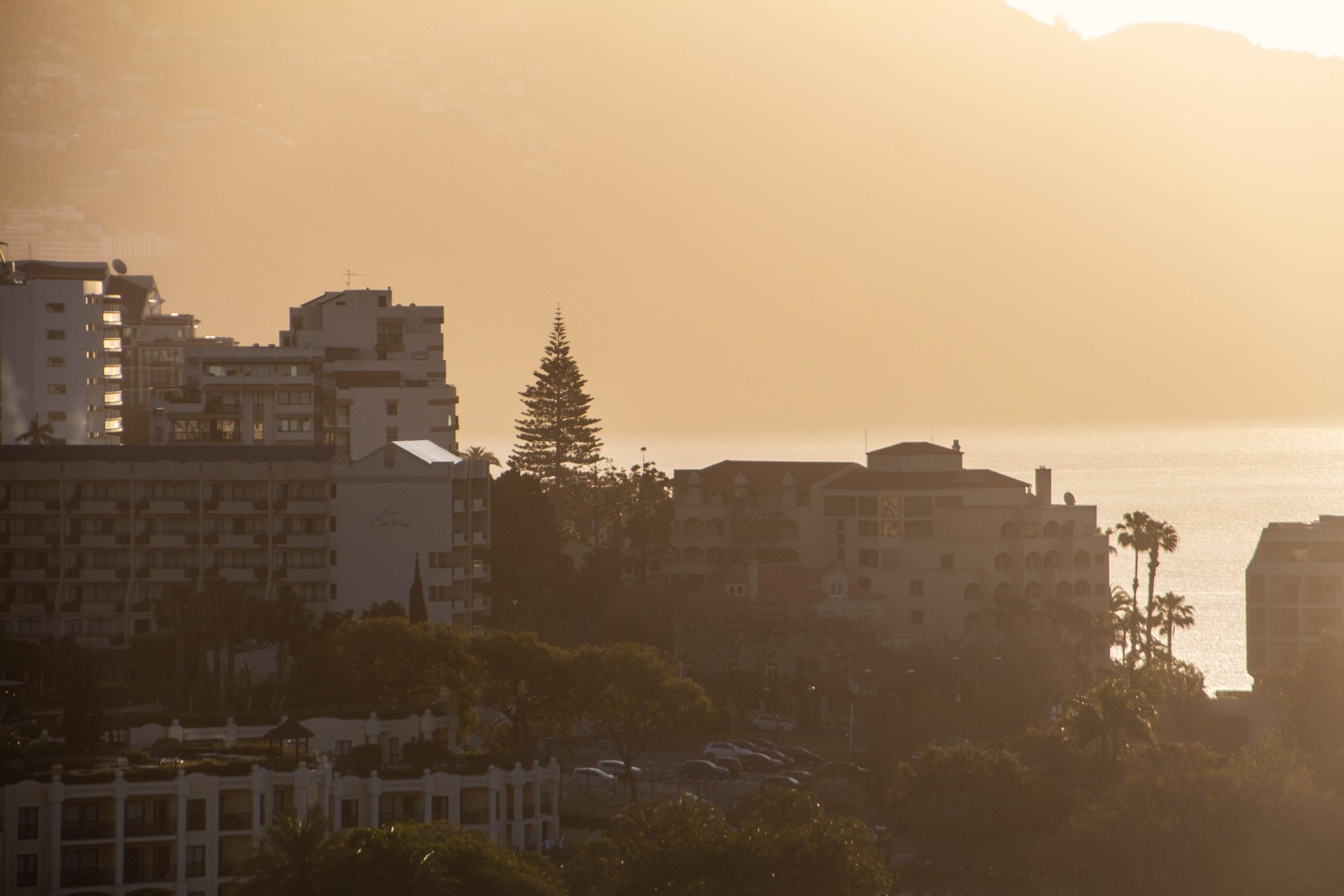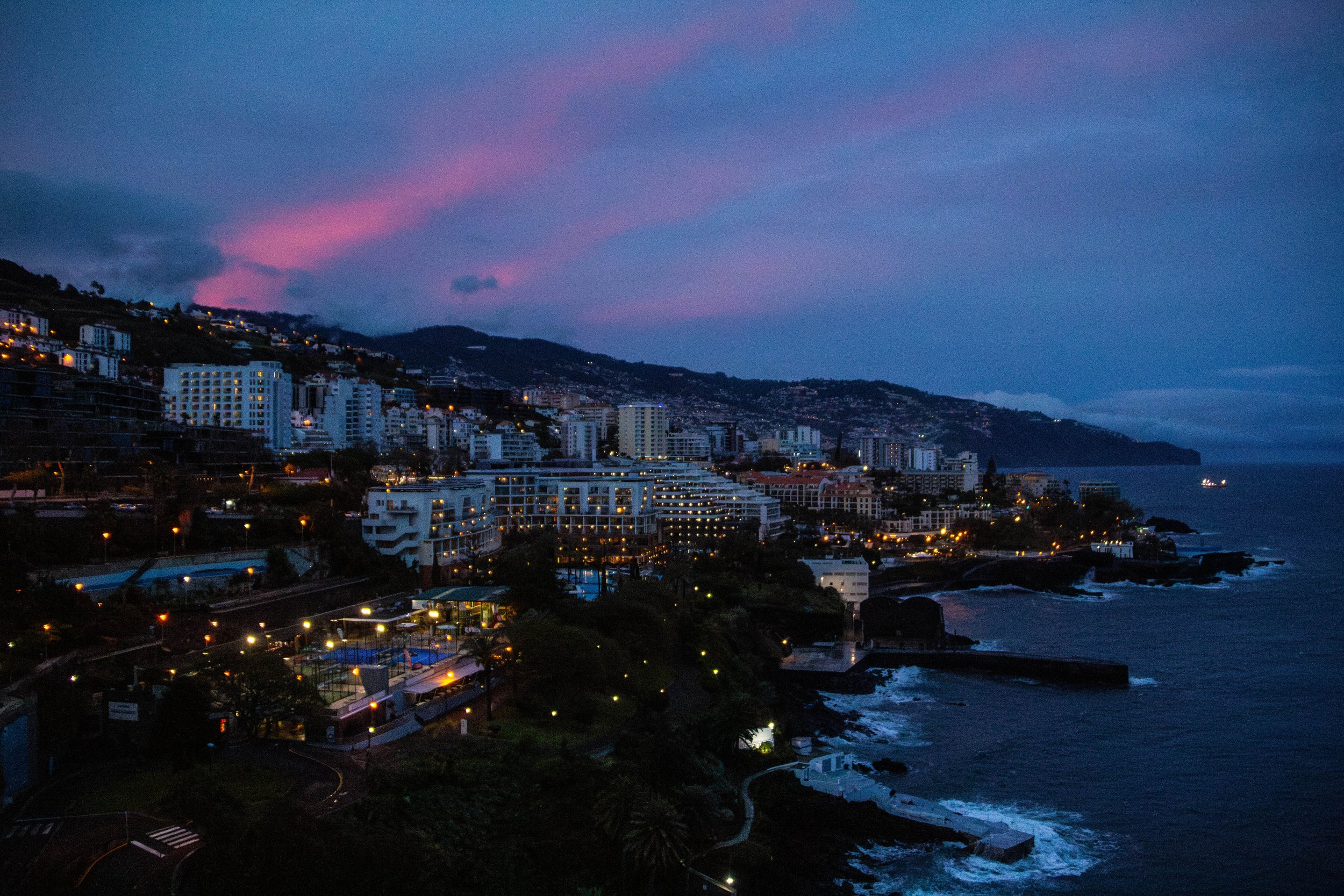Our time in Portugal continues! Now we’re going to head to the Lisbon airport and catch a plane to a little-known island off the coast of Africa that… somehow… is still part of Portugal?? It’s called Madeira… check out this map:
To be perfectly honest, even I—PETER, THE MAP ENTHUSIAST—wasn’t sure where Madeira was when the idea of traveling here was first posed to me. This is why it’s good to plan trips with other adventurous friends: they will push you to places you wouldn’t have otherwise considered! Once we settled on going to Madeira, it turned out that we had quite a few friends who had traveled here before us, so perhaps this island isn’t so “little-known” after all. 🤷🏻♂️
The 1-Minute Intro 2 Madeira
Whenever I come to one of these sorts of “how-is-it-possible-that-this-part-of-Europe” kinds of places, I am always bracing myself to have to write about the evils of colonialism. Like surely there was race of local people here a long time ago that the Portuguese murdered, right? Well, as it turns out, Madeira belongs to Portugal fair & square! They weren’t the first to set foot on the island—both the Carthaginians and the Vikings had been here before—but they apparently never set up any permanent settlement. Portugal started moving people out to this island in 1420, just 2 years after the first Portuguese explorers found this place, and it has been part of their great nation ever since!
So, why would a bunch of people from mainland Portugal willingly move to this empty island in the middle of the ocean, a voyage from which they would almost certainly never return? Well, who knows—they were all individuals living their own stories—but seeing as most of them were peasant-class farmers and fisherman living in a highly unequal society that had just recently been brought to the brink of collapse by the plague now known as the Black Death… I can see how a fresh start on a tropical island full of unclaimed land would have held some appeal. It definitely took some help from mainland Portugal to get this society functioning self-sufficiently and profitably, but fast-forward to the present day and Madeira has been a Portuguese population center for centuries!
In the modern context, my understanding is that—despite its natural beauty and thriving tourist economy—Madeira has historically/generally been looked down on by mainlanders as a poor, isolated, backwards place. This dynamic of inequality made the rise of Cristiano Ronaldo all the more meteoric. That’s right: CR7 is from Madeira! And his humble origins here are part of the rags-to-riches story that is his life.
So, life has never been easy on Madeira, but make no mistake: this place is Portuguese through and through.
Arriving in Madeira
We touched down in—get this—Cristiano Ronaldo Airport 😂 and immediately went to pick up our rental car. The conventional wisdom for visiting this place is that you will be much happier if you have your own set of wheels, and that definitely proved to be true for us. As we sped out of the airport, the landscape unfolding before us was pretty unbelievable. Here are a few snaps from the drive…
We wound our way through this improbable landscape, past the main town of Funchal, and finally to our Airbnb, which was a small studio apartment on the 7th floor of an old but sturdy high-rise that sat on the ocean side. The apartment itself wasn’t the nicest, but I was grateful to be there every day at sunset. Here’s all my favorite pictures that I took off this balcony during the trip.
I promise that we’re going to get out into Funchal very soon, but first, let me show you something from one of travel’s understated “in-betweens”. It’s the seafood section of the grocery store next to this apartment complex. I love being on islands because the seafood section is always off the hook. Where else are you going to see pre-packaged octopus tentacles?? And those black fish are called black scabbardfish, which are actually held in very high esteem in Madeira. They are mostly found between 600 and 5,600 feet deep in the ocean, which makes them pretty tough to catch. But in Madeira—apparently—people love them so much that they are called “black gold.” These fish can also be found in other parts of the North Atlantic, but I don’t think any place loves them as much as here. So of course you’ll see it on lots of dinner menus around the island, but you’ll also see it packed on ice in your local grocery store. Interestingly, these fish are potentially not the most healthy meal, as they can be high in toxic metals such as lead, mercury, and cadmium… but supposedly there’s very little health risk if the liver is removed correctly. I dunno about you, but that’s definitely enough to dissuade me from buying them in the grocery store. But we had some at a restaurant one night and we survived.
Exploring Funchal
At first glance, most of Madeira seemed to be hotels and tourist infrastructure. The reviews I had heard about Funchal from friends that had visited were mostly lukewarm, so I was skeptical that anything on this island would feel historic, authentic, or charming at all. And that was totally okay! We came here for the natural beauty. But this is where Funchal really surprised me. Don’t get me wrong, this is a far cry from the beautiful streets of Lisbon—the main reason why you would come to Madeira is still the natural beauty—but it’s definitely worth spending an afternoon in Funchal.
By the way, I believe it’s pronounced "(Foon - chal)”… but that didn’t prevent us from jokingly calling it “Funkle” for the majority of our stay.
The population of Funchal is about 106,000, and—along with the rest of Portuguese civilization on Madeira—it dates back to the early-mid 1400s. The name Funchal is derived from the Portuguese word for fennel, which grew wild all over this area when the first mainland settlers arrived here. Today it’s the administrative capital of Madeira and major stop-over for cruise ships, which fills its streets with visitors wearing flowery clothing most days. It’s definitely got strong vacation vibes. So, since we’re on vacation, let’s start our adventuring with a quick pit-stop at a local bakery for Portuguese Custard Tarts.
Okay, now we have to burn off those calories, so let’s get to walking!
The streets of Funchal were really quite scenic. The cobblestone roads, narrow alleyways, and terracotta roofs of the historic center of the city created an interesting middle ground between Caribbean and European cities. However, what really lent some magic to this place was the geographical surroundings. The ocean air was lovely, and the mid-Atlantic breeze made even the sunniest, hottest streets feel pleasant. And occasionally, where there were breaks in the cityscape, you could see the orange rooftops of Funchal bending upward in the distance, up the sides of the mountain until they disappeared into cloud cover. I haven’t been to Colombia yet, but this reminded me of the pictures I have seen of it.
Once you get out of the really old historic area, the cobblestones streets give way Portugal’s emblematic calçadas (i.e. the intricate light-colored tile sidewalks). The rich vegetation of this city really adds to the aura as well, dropping exotic leaves on the beautiful calçadas. I found myself wandering through the dense jungle that is Jardim Municipal do Funchal (an urban garden that covers about 1 city block), and then on to a larger, more open park called Parque de Santa Catarina. This park sites on a hill, which gave a great view over the city and the waterfront. But, by the time I got here, I also felt like I had gotten a decent view of “a day in the life” here in Funchal. People were coming and going from work, or hanging out with their partners in the leafy shade. It was nice. And it was not—as I had expected—completely overrun with tourists. I think we were coming a bit off-season, but the lesson here—as I have learned in so many other improbable places—is that there are people who call this home. It’s an interesting alternate reality to consider.
That is Funchal. It’s a pretty place, but the REAL allure of Madeira is out on the hiking trails.
Up next we will do a sun-soaked hike out through some very rugged, volcanic terrain… but for now, I’ll leave you with a feel-good song that was in my rotation at the time of this trip.















































































































